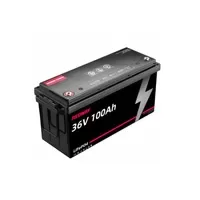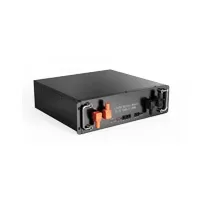Welcome to the electrifying world of Powerwall! Have you ever wondered how this sleek and innovative device knows exactly when to charge? Well, wonder no more! In this blog post, we are going to dive deep into the fascinating realm of Powerwall technology and uncover the secrets behind its intelligent charging system. Get ready to be amazed as we unravel the mysteries that make Powerwall a true game-changer in energy management. So grab a cup of coffee, sit back, and let’s embark on this enlightening journey together!
What is a Powerwall and how does it work?
What is a Powerwall and how does it work? These are common questions that arise when exploring the world of renewable energy. A Powerwall, developed by Tesla, is a rechargeable lithium-ion battery designed to store energy generated from solar panels or other renewable sources.
The concept behind the Powerwall is simple yet revolutionary. It acts as a backup power supply for your home, allowing you to use stored energy during peak demand periods or in the event of a power outage. But how does it actually work?
At its core, the Powerwall utilizes advanced battery management systems (BMS) to monitor and control its charging and discharging processes. This intelligent system ensures efficient utilization of stored energy while prolonging the lifespan of the battery.
The BMS continuously monitors various parameters such as voltage, current, temperature, and state-of-charge to determine when charging should occur. It optimizes charging based on factors like electricity rates, time-of-use tariffs, weather forecasts, and even your personal preferences.
By analyzing real-time data and taking into account external factors such as sunlight availability or grid electricity prices at different times of day – all customizable through user settings – the BMS can make informed decisions about when to charge your Powerwall.
This sophisticated technology not only maximizes self-consumption of clean energy but also allows homeowners to take advantage of lower electricity costs during off-peak hours. Additionally, it ensures that the battery is always ready for unexpected outages or emergencies.
A Powerwall works by utilizing cutting-edge BMS technology to intelligently manage its charging process based on various parameters like energy demand patterns and user preferences. By doing so efficiently and effectively storing renewable energy for future use whenever needed.
The Importance of Battery Management Systems (BMS)
The Importance of Battery Management Systems (BMS)
In order to understand how Powerwall knows when to charge, it’s important to delve into the role and significance of a Battery Management System (BMS). The BMS is an essential component of any battery storage system like the Powerwall.
So, what exactly does a BMS do? Well, it serves as the brains behind the operation, monitoring and managing various aspects of the battery. It helps ensure optimal performance and longevity by controlling charging and discharging processes, balancing cell voltages, and protecting against overcharging or overheating.
One key function of the BMS is determining when it’s time for the Powerwall to charge. It constantly analyzes factors such as current energy usage patterns, solar production levels, grid electricity rates, and even weather forecasts. By considering all these variables in real-time, the BMS can make informed decisions on when to initiate charging cycles.
Another crucial aspect that influences charging decisions is user control and settings. Tesla has designed intuitive software interfaces that allow users to customize their preferred charging options based on their specific needs or preferences. This level of flexibility ensures that individuals can maximize their energy savings while maintaining a reliable power supply at all times.
By leveraging advanced technology within its Battery Management System (BMS), Powerwall stands out from other traditional batteries in terms of efficiency and effectiveness. With real-time data analysis combined with user input options for tailored settings, Powerwall optimizes its own charging patterns based on individual requirements.
In conclusion,
The importance of a well-designed Battery Management System cannot be emphasized enough when discussing how Powerwall determines when to charge. It plays a vital role in ensuring efficient operation by constantly monitoring various parameters while providing users with customization options for personalized energy management strategies. With an intelligent BMS at its core, Powerwall continues to revolutionize home energy storage systems by delivering reliable power whenever needed while maximizing savings potential through optimized charging algorithms.
How BMS helps Powerwall determine when to charge
The Battery Management System, or BMS, plays a crucial role in helping the Powerwall determine when to charge. This system is responsible for monitoring and controlling the battery’s overall performance and health. By continuously analyzing factors such as temperature, voltage, and current flow, the BMS can make intelligent decisions about when it is optimal to initiate charging.
One of the primary functions of the BMS is to ensure that the batteries are not overcharged or discharged beyond safe limits. It constantly monitors the state of charge (SOC) and adjusts charging rates accordingly to prevent any damage or degradation. Additionally, by keeping track of energy consumption patterns in your home, the BMS can identify periods of low demand and schedule charging during these times for maximum efficiency.
Another key aspect of how the BMS helps with charging decisions is its ability to communicate with external sources such as solar panels or utility grids. By receiving real-time data on electricity generation and demand, it can intelligently prioritize when to draw power from renewable sources versus stored energy in order to optimize self-consumption or minimize reliance on traditional power sources.
Thanks to its advanced Battery Management System capabilities, Powerwall ensures efficient and reliable charging processes while prioritizing safety measures at all times.
Factors that affect charging decisions
Factors that affect charging decisions
When it comes to determining when to charge, the Powerwall takes into account various factors to ensure efficient and optimal performance. One of the key considerations is the current state of charge (SoC) of the battery. If the SoC is low, indicating that there isn’t enough energy stored, the Powerwall will prioritize charging.
Another factor that affects charging decisions is grid demand. The Powerwall monitors fluctuations in electricity usage and can determine if there’s a high demand on the grid. In such cases, it may delay or reduce its charging rate to help alleviate strain on the electrical system.
Additionally, weather conditions play a role in charging decisions. If there’s an anticipated period of high solar generation due to clear skies and abundant sunlight, the Powerwall may increase its charging rate to capture as much solar energy as possible.
The user’s settings and preferences also influence how the Powerwall charges. Users have control over setting specific times for off-peak charging or prioritizing solar self-consumption. These settings allow users to customize their energy usage based on their individual needs.
By considering factors such as SoC, grid demand, weather conditions, and user preferences, the Powerwall intelligently manages its charging process for maximum efficiency and reliability.
User control and settings for charging options
User control and settings for charging options
One of the great features of Powerwall is that it allows users to have control over their charging options. With advanced technology and intuitive design, Powerwall offers a range of customizable settings to meet individual needs.
Users can choose between different charging modes. The “Self-Powered” mode prioritizes using stored energy from solar panels or off-peak electricity rates. This option is perfect for those who want to minimize reliance on the grid and maximize self-sufficiency.
Alternatively, the “Backup Only” mode ensures that Powerwall remains fully charged at all times, ready to provide backup power during outages. This setting provides peace of mind knowing that essential appliances will always have power when needed most.
Furthermore, users can set customized charge levels based on their specific requirements. Whether it’s charging up to a certain percentage overnight or maintaining a minimum level throughout the day, Powerwall grants flexibility in managing energy storage.
Additionally, there are options for time-based controls where users can schedule when their Powerwall charges or discharges. This feature allows individuals to take advantage of lower electricity rates during specific hours or optimize energy usage based on daily routines.
Moreover, the user-friendly mobile app provides real-time monitoring and control over various aspects of Powerwall’s performance. It enables easy adjustment of settings according to changing preferences or energy demands.
In conclusion…
Powerwall empowers individuals with its user-controlled charging options. By offering various modes, customizable charge levels, time-based controls, and an intuitive app interface – it puts energy management directly into the hands of homeowners like never before!
Benefits of using a Powerwall with advanced charging technology
Benefits of using a Powerwall with advanced charging technology
1. Energy cost savings: One of the major benefits of using a Powerwall with advanced charging technology is the potential for significant energy cost savings. By optimizing when and how your Powerwall charges, you can take advantage of off-peak electricity rates or excess solar power generation to store energy for use during peak demand periods. This can help reduce your reliance on the grid and lower your overall electricity bills.
2. Increased self-sufficiency: With advanced charging technology, your Powerwall can intelligently manage its charge based on factors such as weather forecasts, time-of-use pricing, and your household’s energy consumption patterns. This means that even during power outages or high-demand periods, you can rely on stored energy from your Powerwall instead of solely depending on the grid.
3. Backup power during emergencies: A Powerwall equipped with advanced charging technology ensures that you have backup power available when you need it most. Whether it’s due to severe weather events or unexpected blackouts, having a fully charged Powerwall allows you to keep essential appliances running and maintain comfort and safety in your home.
4. Environmental sustainability: By utilizing a Powerwall with advanced charging technology, you contribute to reducing greenhouse gas emissions by increasing the efficiency and utilization of renewable energy sources like solar panels or wind turbines. The ability to store excess clean energy generated during low-demand times helps offset the need for fossil fuel-based electricity generation during peak hours.
5. Flexibility and control: Advanced charging technology in a Powerwall provides users with greater flexibility and control over their energy usage. You can customize settings through an intuitive app interface which allows you to prioritize certain appliances or areas of your home for powered operation during specific times or events while minimizing unnecessary use elsewhere.
In conclusion,
The integration of advanced charging technology into Tesla’s Powerwalls offers numerous benefits ranging from cost savings to environmental sustainability and increased independence from traditional grids. By optimizing when and how energy is stored and used, Powerwall users can
Conclusion
Conclusion
Powerwall is an innovative and advanced energy storage solution that has revolutionized the way we power our homes. With its intelligent battery management system (BMS), Powerwall can efficiently determine when to charge, ensuring maximum performance and reliability.
The BMS plays a crucial role in monitoring and controlling various factors that affect charging decisions. By analyzing real-time data such as energy consumption patterns, weather conditions, and electricity rates, Powerwall can optimize its charging cycles to save costs and maximize the use of renewable energy sources.
Furthermore, users have the flexibility to customize their Powerwall’s charging options based on their individual needs and preferences. Whether it’s prioritizing self-consumption or time-of-use optimization, Powerwall puts control in your hands.
By leveraging advanced charging technology, Powerwall offers several benefits for homeowners. It allows them to store excess solar energy during peak production hours for later use when demand is high or at night when grid electricity is more expensive. This not only reduces reliance on fossil fuels but also helps lower utility bills.
Additionally, with its seamless integration with solar panels and home automation systems, Powerwall provides reliable backup power during outages or emergencies. It ensures uninterrupted supply for essential appliances like refrigerators, lights, and medical devices even when the grid goes down.
In conclusion,
Powerwall’s ability to know when to charge stems from its sophisticated battery management system that takes into account various factors influencing optimal charging decisions. By harnessing real-time data analysis and user customization options, this cutting-edge technology empowers homeowners with greater control over their energy consumption while promoting sustainability.
Investing in a Tesla Powerwall means not only embracing clean energy solutions but also enjoying long-term savings through efficient utilization of renewable resources. So why wait? Join the green revolution today by bringing home a game-changer like Powerwall!




























